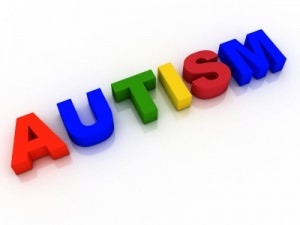
April is Autism Awareness Month. In March 2014, the Centers for Disease Control and Prevention released data showing that 1 in 68 children (1 in 42 boys and 1 in 189 girls) have Autistic Spectrum Disorder (ASD). Those with ASD have to struggle through difficult symptoms just to function in everyday life. Neurofeedback has been shown to make significant improvements in symptoms of ASD. Neurofeedback identifies where the brain is having trouble processing information using EEG technology.
After the brain map, neurofeedback sessions are created to fit the specific needs of the individual. Neurofeedback sessions are completely natural, identifying the root of the problem within the brain to make long-lasting functional change without any negative side effects. Read the following symptoms that can be improved by neurofeedback sessions for those on the autistic spectrum.
1. Stimming – Repetition of physical movements or sounds is very common in ASD patients. Often, this is done because sensory stimuli can become too overwhelming or uncomfortable. Neurofeedback works to make the brain function more calmly and efficiently, reducing the patient’s perception of stimuli as being overwhelming. If the patient feels more calm overall and the stimuli around them does not seem overwhelming, the stimming can be reduced or eliminated.
2. Emotional outbursts – Neurofeedback improves emotional control within the brain to help the brain functioning calmly. Emotional outbursts are often due to feeling overwhelmed. Just as stimming results from this, emotional outbursts can also result, as the brain does not know how to cope with the information being provided to it. When the brain functions calmer, the person no longer feels compelled to act out emotionally.
3. Speech issues – Neurofeedback strengthens brain processing, including the areas in the brain that are responsible for taking in sensory information and building a response. Therefore, neurofeedback sessions can improve a person’s ability to engage in conversation and appropriately process what is being said and what should be said in return.
4. Ritualistic behavior – Ritualistic behavior is often performed to deal with anxiety or overwhelming external stimuli, giving the patient a sense of self control. However, neurofeedback trains the brain to be able to cope with anxiety and external stimuli with more ease, thereby substantially reducing and/or eliminating ritualistic behaviors.
5. Intolerance to change – Neurofeedback trains the brain to process information calmly and appropriately, so when new, even surprising information is presented, the person is able to cope with the seemingly sudden change without feeling overwhelmed.
6. Hyperactivity – The brain is taught to function more calmly and deal with anxiety more appropriately, thereby reducing symptoms of hyperactivity.
7. Impulsivity – Impulsivity can be significantly reduced and/or eliminated as the brain learns to cope with anxiety in a healthy, sustainable way through neurofeedback.
8. Inability to follow/regard direction from authority figures – Often times for those struggling on the autistic spectrum, even processing the information given regarding directions can be absolutely overwhelming, so expecting the patient to be able to fulfill these directions seems overwhelming if not impossible. Neurofeedback sessions make the brain function more efficiently and calmly, allowing the patient to improve information processing, which improves the ability to follow the directions given by parents and/or teachers.
9. Anxiety – As one can see after reading the previous eight symptoms, so very many symptoms of ASD are rooted in anxiety. If the brain is overwhelmed by anxiety, processing information can be overwhelming and cause emotional reactions. Once the brain learns to calm itself anxiety can be reduced or eliminated.
10. Issues with social skills – When the brain is working at it’s best, with far less anxiety and better processing, being social becomes easier.
First image courtesy of David Castillo Dominici at FreeDigitalPhotos.net.
Second image courtesy of Stuart Miles at FreeDigitalPhotos.net









